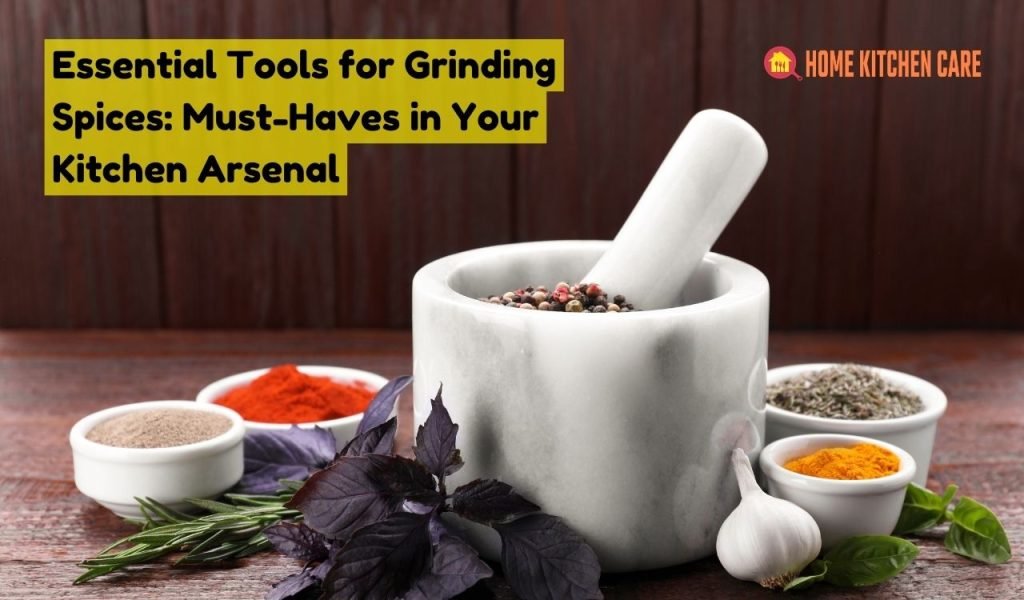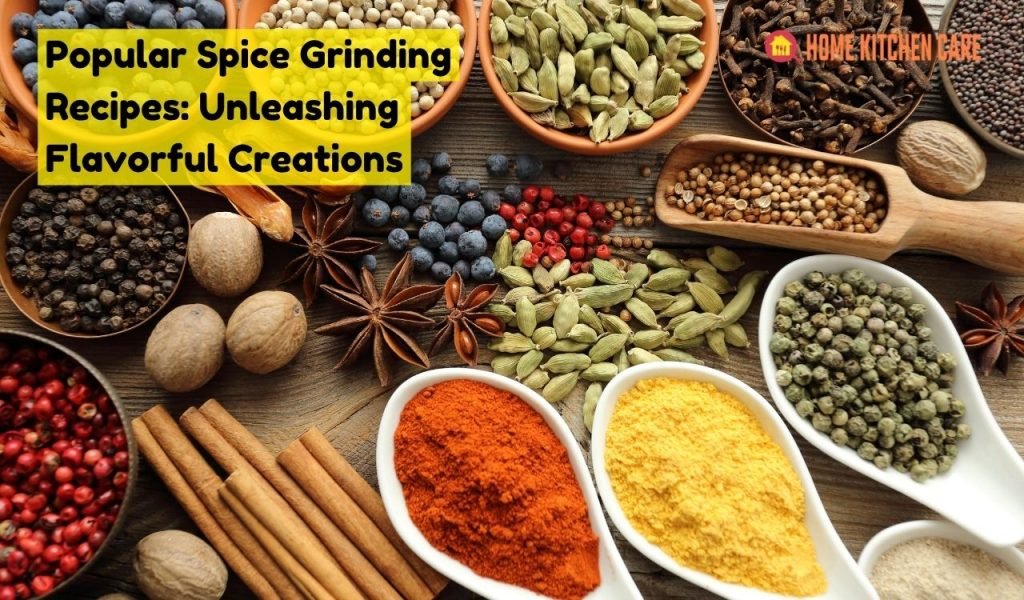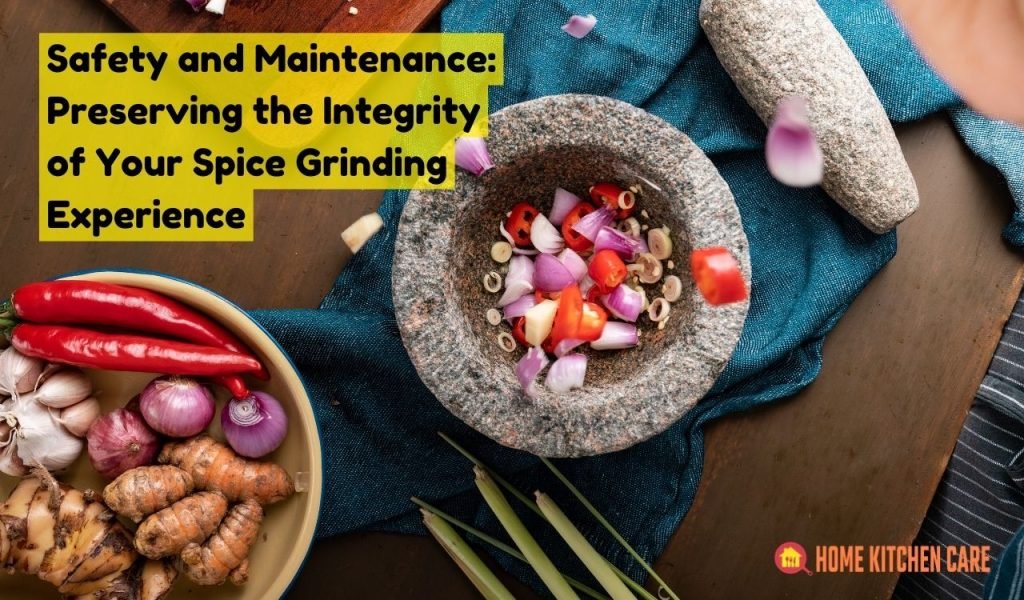Physical Address
304 North Cardinal St.
Dorchester Center, MA 02124
Physical Address
304 North Cardinal St.
Dorchester Center, MA 02124

Looking to unleash the full flavor potential of your spices but missing a mortar and pestle? No worries! Our guide on how to grind spices without mortar and pestle has got your back. Say goodbye to traditional tools and get ready to discover unconventional techniques that will elevate your culinary game. This concise yet comprehensive guide will walk you through alternative methods that will leave you wondering why you haven’t tried them before.
From creative substitutes to clever kitchen hacks, we’ve got all the spice-grinding secrets you need. So, get ready to spice things up in the kitchen as we reveal how to grind spices without the fuss of a mortar and pestle. Let’s dive in and unlock a world of bold flavors and aromatic delights.
Main Summary: How to grind spices without mortar and pestle?
Grinding spices without a mortar and pestle is easy! Use a coffee grinder for quick results, opt for a rolling pin and a zip lock bag for a makeshift setup, or try a spice mill for precision. Embrace the convenience without sacrificing taste!
Grinding spices is a fundamental technique in the culinary world, allowing us to unlock the full potential of their flavors and aromas. While a mortar and pestle is the traditional tool for this task, there are alternative methods available that can deliver equally impressive results. These techniques enable us to grind spices without relying on specialized equipment, providing versatility in the kitchen.
In this guide, we will explore various ways to grind spices without a mortar and pestle. When it comes to grinding spices without a mortar and pestle, there are several creative and practical approaches. One popular method is to use a coffee grinder or spice grinder. These electric appliances are specifically designed to grind spices efficiently and consistently, offering convenience and precision.
If you don’t have access to a grinder, fear not! You can employ everyday kitchen items as substitutes. For instance, a rolling pin and a sturdy cutting board can serve as effective tools for crushing and grinding spices. This technique allows for control over the texture and is particularly suitable for smaller quantities. Another option is to use a ziplock bag and a heavy object, such as a hammer or a mallet.
By placing the spices in the bag and gently pounding them, you can achieve the desired grind consistency. Additionally, some spices can be grated using a microplane or fine grater, providing a fine powder texture that is ideal for certain recipes.
By embracing these alternative methods, you can still achieve excellent results in grinding spices, even without a mortar and pestle. The key is to choose a technique that suits your needs and the specific spices you are working with. So, let’s dive into the various methods and explore the art of grinding spices without a mortar and pestle!

To embark on your spice grinding journey, let’s start by exploring the essential tools that can serve as mortar and pestle alternatives. These tools offer convenience and efficiency, enabling you to achieve finely ground spices with ease.
Coffee grinders are a popular choice for spice grinding enthusiasts. They are versatile, easy to use, and can deliver consistent results. Simply add your spices to the grinder and pulse until you achieve the desired fineness. However, it’s crucial to clean your grinder thoroughly to avoid flavor contamination.
Most kitchens have blenders, and they can be excellent substitutes for mortar and pestle. Opt for a high-speed blender that comes with a grinding attachment or a dedicated spice grinder accessory. This way, you can efficiently grind your spices without compromising the texture and aroma.
If you’re a spice aficionado, investing in a dedicated spice grinder might be worth considering. These specialized tools are designed to grind spices to perfection, offering optimal control over the coarseness and consistency of your ground spices. Spice grinders come in various sizes and styles, so choose one that suits your needs and budget.
When it comes to grinding spices, a mortar and pestle may be the traditional choice, but there are alternative methods that can yield equally impressive results. These unconventional techniques allow you to grind spices without relying on specialized equipment, giving you the freedom to explore new possibilities. Let’s dive into some of these alternative methods and unleash your spice grinding potential.
One alternative method that’s widely accessible is using a rolling pin. This technique allows you to crush spices with precision and control. Follow these steps to utilize a rolling pin for grinding spices:
The rolling pin method is particularly effective for crushing whole spices like peppercorns, cloves, or cardamom pods. It allows you to adjust the coarseness of the grind and extract maximum flavor from the spices.
For a more dynamic approach, consider the hammer and ziplock bag method. This creative technique harnesses the power of impact to grind spices effectively. Here’s how you can use this method:
This method works well for larger spices or tougher seeds like nutmeg or cinnamon sticks. It allows you to break down the spices efficiently while maintaining control over the grinding process.
If you don’t have access to a mortar and pestle, don’t worry! You can still grind spices using various kitchen items as substitutes. Get creative with these alternatives:
Remember to adjust your technique based on the specific spices and desired grind consistency. Each alternative method provides a unique experience and allows you to customize the grinding process according to your preferences.
Grinding spices is an art that requires finesse and precision to unleash their full flavors. Whether you’re using a mortar and pestle or alternative methods, here are some valuable tips and tricks to help you achieve optimal spice grinding results:
To ensure efficient grinding, it’s crucial to find the right balance between the amount of spices and the capacity of your grinding tool. Overfilling the tool can hinder the grinding process and yield uneven results. Start with smaller batches and adjust accordingly to maintain control over the grind.
Different spices have varying textures and oil contents, affecting the grinding duration required. Delicate spices, like cinnamon or saffron, may require shorter bursts of grinding to avoid overpowering the flavors. Robust spices, such as cumin or black peppercorns, may benefit from more extended grinding to achieve the desired consistency. Experiment with different durations to find what works best for each spice.
The texture of ground spices can greatly impact the flavors in your dishes. For finer textures, grind the spices for a longer duration or use tools like coffee grinders or blenders. Coarser textures can be achieved by using a rolling pin or hammering method. Adjust the grinding time and technique to achieve the desired texture for your specific culinary needs.
Before grinding, consider toasting your spices in a dry skillet over medium heat. Toasting releases essential oils and enhances the flavors of the spices. It adds depth and complexity to your dishes. Allow the spices to cool before grinding them, as grinding hot spices can create clumping and affect the final texture.
To prevent flavor cross-contamination, clean your grinding tools between different spices. Wipe or brush away any residue or leftover particles before moving on to a new spice. This ensures pure flavors and avoids any unwanted blending of aromas.
Spice grinding is a sensory experience, and your taste buds are your best guide. Regularly taste and assess the ground spices to ensure they meet your desired flavor profiles. Adjust the grinding time or technique as needed to achieve the perfect balance.
To maintain the freshness and potency of ground spices, store them in airtight containers away from heat, light, and moisture. Glass jars or metal tins are excellent options for storage. Label the containers with the spice name and date of grinding to keep track of freshness. Use the ground spices within a reasonable time frame to enjoy their full flavors.
Spice grinding is not only about following a set recipe but also about exploring and experimenting with different combinations and techniques. Allow your culinary creativity to shine by trying unique spice blends and adapting the grinding process to suit your preferences.
Embrace the joy of discovering new flavor profiles. With these tips and tricks in your spice grinding repertoire, you’ll be able to elevate your dishes with freshly ground spices that tantalize the taste buds. Enjoy the journey of unlocking the flavors and aromas that await you in the world of spice grinding!

Exploring the world of spice grinding opens up a multitude of possibilities for creating unique and flavorful dishes. Here, we’ll dive into some popular spice grinding recipes that will take your culinary creations to new heights. Get ready to unleash your creativity and tantalize your taste buds!
Curry powder is a versatile spice blend that adds depth and complexity to a wide range of dishes. Create your own fragrant curry powder using freshly ground spices for an authentic and aromatic experience. Here’s a simple recipe to get you started:
Ingredients:
Instructions:
Garam masala is a quintessential spice blend in Indian cuisine, known for its warm and aromatic flavors. By grinding your own spices, you can customize the blend to suit your taste preferences. Give this garam masala recipe a try:
Ingredients:
Instructions:
Herb and spice salts are versatile blends that can elevate the flavor of various dishes. The combination of freshly ground spices and high-quality salt creates a harmonious seasoning. Here’s a simple recipe to make your own herb and spice salt:
Ingredients:
Instructions:

When it comes to spice grinding, safety and proper maintenance are crucial for both your well-being and the longevity of your tools. Let’s explore some essential tips and practices to ensure a safe and enjoyable spice grinding experience.
By following these safety precautions and maintenance practices, you can enjoy your spice grinding endeavors with peace of mind, knowing that you are preserving the integrity of your spices and ensuring the longevity of your grinding tools.
In conclusion, mastering the art of grinding spices without a mortar and pestle opens up a world of possibilities in the kitchen. With the use of alternative methods and tools such as coffee grinders, rolling pins, ziplock bags, and food processors, you can achieve finely ground spices and elevate the flavors of your culinary creations.
Whether you’re opting for convenience and precision or embracing a hands-on approach, there are numerous ways to grind spices without the traditional equipment.
So, unleash your creativity, experiment with different techniques, and enjoy the aromatic and flavorful results that freshly ground spices bring to your dishes. With these newfound skills, you can embark on a culinary adventure and savor the delightful nuances and aromas that homemade spice blends add to your favorite recipes. Happy grinding!
Various tools can be used to grind spices if you don’t have a mortar and pestle. Some effective alternatives include using a coffee grinder or spice grinder, a rolling pin and cutting board, a ziplock bag and a heavy object like a hammer or mallet, or a microplane or fine grater.
The best appliance for grinding spices without a mortar and pestle depends on personal preference and specific needs. However, a coffee grinder or spice grinder is widely considered the most effective tool. These appliances are designed specifically for grinding spices, offering power, precision, and consistent results. Remember to clean the grinder thoroughly to avoid flavor contamination between different spices.
To grind spices by hand without a mortar and pestle, you can use alternative methods such as using a rolling pin and cutting board, placing the spices on the cutting board, covering them with a kitchen towel, and rolling the pin back and forth with firm pressure.
Another method is to place the spices in a sealed ziplock bag and gently pound them with a hammer or mallet. You can also use a microplane or fine grater to grate spices like nutmeg or cinnamon into a fine powder texture.
Crushing cardamom seeds without a pestle and mortar can be done using alternative methods. One method is to place the cardamom seeds on a cutting board, cover them with a kitchen towel or parchment paper, and use the flat side of a heavy knife or the bottom of a glass to apply pressure and crush the seeds. Roll the knife or glass back and forth over the seeds until they are crushed to the desired consistency.
To crush saffron without a mortar and pestle, you can place the saffron threads on a cutting board or a small plate. Use the back of a spoon or the bottom of a glass to press down and crush the saffron threads. Apply gentle pressure while moving the spoon or glass in a circular motion until the saffron threads break down into a fine powder. Collect the crushed saffron and use it as desired in your recipes.
Take care not to exert too much pressure, as saffron threads are delicate. Crushing saffron by hand allows you to release its vibrant color and enhance the flavor in your dishes.
Instead of a mortar and pestle, a food processor can be a suitable alternative for grinding spices. It provides convenience and efficiency, allowing you to achieve finely ground spices. Simply add the spices to the food processor and pulse in short bursts until you reach the desired consistency. Be sure to clean the food processor thoroughly to avoid flavor contamination between different spices.
If you don’t have a mortar, there are several substitutes you can use. One option is a heavy-duty bowl and the back of a spoon. Place the spices in the bowl and press down firmly with the back of the spoon to crush and grind them. Another alternative is a sturdy plastic bag and a rolling pin. Put the spices in the bag, seal it tightly, and roll the rolling pin back and forth over the bag until the spices are crushed to your liking.
The easiest way to grind spices is by using a spice grinder or a coffee grinder. These electric appliances are specifically designed to grind spices and provide convenience, power, and precision. Simply add the spices to the grinder, secure the lid, and pulse the machine until you achieve the desired texture. It is important to clean the grinder thoroughly between different spices to avoid flavor contamination.
If you don’t have a mortar and pestle, there are various alternative methods for grinding spices. You can use a coffee grinder, a spice grinder, a food processor, or even a blender to achieve the desired results. Other options include using a rolling pin and cutting board, a heavy-duty bowl and the back of a spoon, or a plastic bag and a rolling pin. Experiment with different methods to find the one that suits your preferences and the spices you are working with.